The Vibrant Musical Culture of the 70s
By Justin Koga
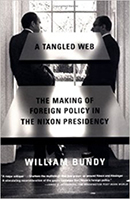
Will Hermes
Will Hermes is a Jamaican-born American author, journalist, and critic who has devoted his life to music. Hermes is a senior critic for the Rolling Stone and a longtime contributor to NPR’s “All Things Considered.” His work has also appeared in Spin, The New York Times, The Village Voice, GQ, and City Pages.
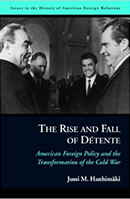
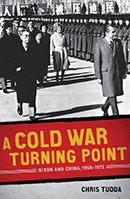
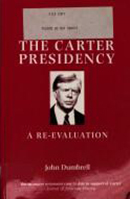
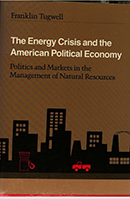
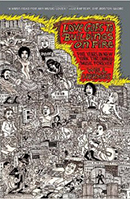
“Trash, go pick it up!”1 The New York Dolls weren’t speaking figuratively when they sang---or rather screamed---the lyrics to their 1973 single, Trash. New York City, in the 70s, was literally buried in putrefying, stinking trash. Hundreds of sanitation workers, police officers, and other public servants had been laid off. New York City, six billion dollars in debt, was in the midst of an economic and social crisis, which threatened the security of the entire state. While New York’s streets were strewn with garbage, it also seemed that only the fringes of society could survive amongst the rampant violence, easily accessible drugs, and open promiscuity. There was a mass exodus of the rich and middle class from the city to the suburbs. Because of the economic depression of the 70s, New York City was seemingly a culturally dead zone. Will Hermes, author of Love Goes to Buildings on Fire, argues to the contrary; 1970s New York City, from the ashes of its urban dystopia rose a diverse and vibrant musical and cultural movement which impacted the musical environment of the whole nation.
Will Hermes categorized his book into five sections, each section chronologically surveying New York’s musical scene from 1973 to 1977. He describes how 60s cultural movement lost its momentum from the economic crisis of the 70s. In the first quarter of his book, Will Hermes portrays 1973 New York as “city teeming with all sorts of DNA.”2 Hermes sets the scene for 1973 New York City in synchronic time. In 1973, historic precedent was delivered in court case Roe v. Wade, legalizing first term abortion, defining a new political climate and the empowerment of women. Movies such as William Friedkin’s Exorcist, defined a new era of cult filmography while infusing philosophical questions of the evil and good defining the era. The Exorcist “ resonated with people who felt that America was a moral cesspool in need of a soul-saving.”3 The movie, Deepthroat, revolutionized the porn industry by becoming the first mainstream film which brought the topic of pornography out from the shadowy periphery and into mainstream conversation. The death of the great Puerto Rican baseball player, Roberto Clemente, brought added awareness to the continued segregation of the various ethnicities. Whereas salsa was emerging on the Upper West Side, the Velvet Underground and Bruce Springsteen were “rocking it out” downtown near Union Square. Hermes relates the early 70s musical scene to light shown through a prism, where the 60s musical light broke up and influenced the distinct musical colors of the 70s. In the first section of his book, Hermes focuses on the development of disco, music in 1973. Disco, as Hermes explained it, was the reaction against the domination of rock music and the stigma of dance music during that period. The first article ever written about disco, by Vince Aletti, emphasized the multicultural aspect of disco. He described disco to be a genre of music containing elements of funk, soul, pop, salsa, and psychedelic. Hermes stated that by the 1970s, discos promised escapism and release. With music and “lighting choreographed to manipulate the mood of the dancers, the experience melded 1970s self-absorption with a 1960s sense of community.”4 Will Hermes summarized the emergence of the disco movement, proudly calling 1973 the age of the disk jockey. Hermes also explains that other types of music began emerge. Because of the influx of Jamaican immigrants in New York City, artists borrowed basic Jamaican beats and defined the sounds of modern Hip-Hop and R&B. Hermes describes how the rock scene resurrected with Bruce Springsteen and The Velvet Underground, whose music was influenced by 60s rock. Hermes parallels the rock musical society to that of the cafe societies in Vienna. As groups of intellectual exchanged ideas and theories with each other in Vienna, groups of musicians exchanged musical progressions and melodies in the 1970s New York. While intricately describing the rock, disco, and hip hop scene, Hermes also analyses parallel developments in classical music. Hermes explains how classical composers such as Phillip Glass and John Cage paved the way to modern harmonies, creating revolutions in classical music. The recent development of 12-tone literature enabled them to extend the boundaries of classical music and minimalism. Hermes argues that the year 1973 set New York’s musical and cultural precedent for the decade.
Will Hermes frames his second chapter, 1974, around New York City’s brink of economic collapse. Abraham Beam was announced the mayor of NYC only to have presided over the city during the fiscal crisis of the mid-1970s, during which the city was almost forced to declare bankruptcy after accumulating a $5.3 million dollar debt. During this year, there was an increase in secularism, with anti-religious and anti-church movements. People saw this as a “positive sign” for the changing and augmenting audience. Andy Warhol’s short film, Pork, identified much of the culture and social scene at the time. His film portrayed the American society as punk, pornographic, and sexual. The general mentality of the New Yorkers was that “heroin possesses no negative qualities.”5 Rising from all the rubble, however, Hermes argues that this period was still a rich time for music. Jazz and rock fusions signified a coming of a new era. The New York salsa scene popularized in 1974, as an influx of Spanish immigrants and 3rd generation English-speaking Spanish dominated the streets in SoHo. This heavy concentration of Latin American people not only inspired revolutions in salsa music, but also affected other music genres such as jazz and be-bop. Philippe Petit’s walk across the twin towers signified a new age of defiance and lawlessness as well. As the streets became even more dangerous, and the economy continued to evaporate, Hermes explains how the shift in modern perception of sexuality began to change. As more and more rock artists began to express their homosexuality, being gay essentially became the “new cool.” Homosexuality was beginning to become more socially and culturally acceptable. Hermes explains that New York’s societal changes reflected its musical changes.
The trash and the economic depression of 1974 literally and figuratively left New York City in the dirt. Hermes describes in his third chapter, 1975, the City in 1975 that was teetering on the edge of bankruptcy and threatening to bring down the entire state. At the time, no state had gone bankrupt, but President Ford wanted to make New York an example to the rest of the country. His spokesman compared the city to “a wayward daughter hooked on heroin... You don’t give her $100 a day to support her habit.”6 As a response the New York Times portrayed his response as follows: “FORD TO CITY: DROP DEAD.” By this time, Heroin was selling for nearly $2-3 per bag, running New York’s drug culture out of control. During this year, Jazz music flourished. With the dense and diverse population of New York City, various types of Jazz emerged: Ethio Jazz, freestyle jazz, and eventually Bop infused Jazz. Musical pioneers from all over the world flocked to New York City in hopes of popularizing their music. Mulatu Astatke, inventor of Ethio jazz, infused Ethiopian melodies with Western instruments, leaving room for improvisation. His attempts to forge his new genre occurred in the U.S., although his band members were mostly Puerto Rican. Astatke brought a unique skill set back to Addis with him, where he was able to employ musicians who grew up with the music he was so consciously modernizing. In addition to new forms of Jazz, 1975 produced a new punk rock scene, inspired by the end of the Vietnam War. Hermes further elaborated on the different types of rock in his final two chapters.
In finale of his book, Hermes describes the years of 1976 and 1977, which defined two types of rock: punk rock inspired by national “atrocities” and “dream state” rock. American rock bands eventually began to protest these national atrocities. The definition of a Punk band is as follows: “a type of rock-’n’-roll, reaching its peak in the late 1970s and characterized by loud, insistent music and abusive or violent protest lyrics, and whose performers and followers are distinguished by extremes of dress and socially defiant behavior.”7 In effect, Punk rock was the voice of the people’s’ discontent resulting from the hellish and dangerous environment of New York City in the mid 1970s. Various bands such as the Chico and the Man and Keith and Kenneth Smith gave performances criticizing New York’s racial disparities and it’s violence on the streets. David Mancuso, of the band, Love Saves the Day (LSD), stated that “music has the ability to induce a kind of waking dream state…” which was evident of the high illegal substance ratio in New York.8 Violence and drugs permeated the other side of rock music. Marijuana was extremely popular in the cities, however, after the Mayor’s clampdown on all substances after the commemoration the US’s 200 year anniversary, Marijuana became scarce. This was partly due to the “Great Dope Famine, or simply the Drought.”9 The years 1976 and 1977 produced a new category of music: punk rock.
Hermes’s thesis details an argument that between the years, 1973 to 1977, dystopian New York City set the stage for a musical-intellectual revolution which altered the course of modern music. New York City was the backdrop where diverse musicians, all whom were deeply influenced by previous musical icons from the 60s and earlier eras, collaged together and then created innovative, new musical forms from the rock and jazz music of previous generations. According to Hermes, 70s music was not merely a continuation of the 60s, but rather an independent revolution that sparked the creation of many unique musical forms. He tells the story of the beginnings of hip-hop and punk, salsa and disco, minimalism and loft jazz, carefully intertwining them in “detailed accounts of their creators.”10
Will Hermes is a Jamaican-born, author, journalist, and critic who has devoted his life to music. He is a senior critic for The Rolling Stone and a longtime contributor to NPR’s “All Things Considered.” Will Hermes’s book, Love Goes to Buildings on Fire, published in 2011, serves as a nostalgic recollection of Hermes’s experiences while living in the Bronx during the 70s. Hermes says that as a kid, growing up in the 70s, he used to feel that “The 60s was an awesome party that [he] had missed, and [he] was left to drink its backwash.”11 In the 70s musical scene, 60s musical icons such as Jimi Hendrix, Janis Joplin, and Jim Morrison were dead; the Beatles and the Velvet Underground had split, and “classical music seemed irrelevant.”12 However, in Love Goes to Buildings on Fire, Hermes provides a bridge from the rich depth of rock music in the 60s to the diversity of musical exploration in the 70s. Hermes says that “so much of the music that I really loved was either made or conceptualized during this ‘middle period’ that was supposedly dead…[in contrast] it was a very rich and inventive time all happening during one of the worst times both civically and financially in New York City’s modern history.”13 Hermes’s account of the musical scene in Manhattan is very unique because he presents a duality throughout his book: one perspective of a rock artist performing during that era and another of himself. The general perceptions of the era emphasized the unappealing nature of the City, whereas Hermes tried to find its silver lining, that the 70s in New York City was the breeding-ground for a musical revolution.
Will Hermes’s Love Goes to Buildings on Fire has received critical acclaim from other authors and professionals. Hermes’s extensive research has been called “a handy guide to the musical scene [in the 70s]” by Charlie McCann of The Prospect.14 McCann acknowledges that the book extensively covers the years 1973 to 1977 on an intimate, personal level, that is infused with history and personal anecdotes of the time period. He states that Hermes encapsulated the philosophy that prevailed the 70s music scene itself, that the music scene was “splendor in the grit” of that time period.15 Although McCann saw the book as an extensive and informational account, he heavily criticized Hermes’s “absence of a serious argument to connect the dots…,[that Hermes] expends so much of his energy shuttling his characters ...that he never gets round to explaining why mid-1970s New York was a musical milestone.”16 Hermes writes that the music made in the mid-1970s was both new and engaging with the past, but he “doesn’t spell this out for us.”17 David Gates, New York Times reporter and critic, shares the same views as McCann in that Hermes offered “a remarkable quantity and range of material Birgit Nilsson’s 21-minute ovation after singing Brünnhilde...to bloody fisticuffs at CBGB.”18 Gates, however, opens his critique by saying that Hermes book refuses “to oversell the importance of its subject.”19 Both McCann’s and Gate’s reviews praise Love Goes to Buildings on Fire for its extensive research on music during the 70s, but criticize it for its lack of a central focus and cohesive structure.
Hermes relates 1973 New York to a “gene pool...And the city teemed with all sorts of DNA.”20 Hermes’s writing is structured very similarly to traits of a gene pool. His book highlights key events in history and intertwines them with musicians’ and his own anecdotes. Although he argues that the 1970s was a revolutionary time-period for music, Hermes never explicitly supports his statements. He makes grand statements and assumes that the reader will have a broad understanding of the history behind these societal and cultural revolutions. Revolutionary and innovative? Or, derivative and iterations of music from the past? In many instances he contradicts himself by concluding that these musical “innovations” were defined by the past and the 60s. He states that hip hop disk jockeys weren’t even making new music, rather they were collaging isolated and disparate elements from other, previous forms of music. That punk was highly reminiscent of the raw emotion and sound of the 60s and 50s. The music being made in the period of time that Hermes allotted of New York was new, yet highly influenced by the past. Hermes’s account of this synchronic dissection of history was very vague and convoluted, mostly made up of specific anecdotes and other personal accounts.
The author supports the notion that the 1970s signified a severe cultural and economic crisis in the United States, but he argues that from this, the US’s musical scene thrived. From the trash-ridden streets of New York, dozens of independent musical movements arose. Hermes sees the 70s as a continuation of the 60s in that the 70s music was entirely constructed of and inspired by that of the 60s. Musicians like Bruce Springsteen and Patti Smith were highly influenced by groups such as the Rolling Stones and the Beatles who were very prominent in the 60s. Hermes describes the 70s as merely the scent left behind after the dispersion of the 60s and that his book, “is in part about the way creative work is a shared chain-reaction of inspirations.”21
The title of Will Hermes’s book, Love Goes to Buildings on Fire, was based on David Byrne, of the Talking Heads’ song, “Love -> Building on Fire,” which offered a social commentary about the 5,500 recorded cases of arson in the South Bronx. The phrase Love Goes to Building on Fire became a “defiant tribute to the Big Apple.” Hermes’s book encapsulates the same defiant spirit of the 1970s. He describes 1970s New York City as an environment that “produced the deepest beauty, and the most profound change.”22 Will Hermes’s book depicts a cross cultural pollination amongst many groups of artists, poets, and even journalists of the New York 1970s which created a rich music and cultural scene. Hermes argues that the impact of the 70s transcends that of just the time period, that the 70s inspired and influenced the culture that we know today.
Footnotes:
- Hermes, Will. Love Goes to Buildings on Fire: Five Years in New York That Changed Music Forever. New York: Faber and Faber, 2011. Print., ii
- Hermes, Will. 24.
- Hermes, Will. 45.
- Hermes, Will. 56.
- Hermes, Will. 78.
- Hermes, Will. 11.
- Hermes, Will. iii.
- Hermes, Will. iv.
- Hermes, Will. 138.
- Hermes, Will. 228.
- Hermes, Will. 25.
- Hermes, Will. 244.
- Hermes, Will. 167.
- McCann, Charlie, “Longing for New York’s Bad Old Days | Prospect Magazine.” Prospect Magazine Longing for New Yorks Bad Old Days Comments. N.p., n.d. Web. 31 May 2015. 2.
- McCann, Charlie. 2.
- McCann, Charlie. 4.
- McCann, Charlie. 3.
- Gates, David. “When Dreamers Were Breaking the Music Apart.” The New York Times. The New York Times, 05 Dec. 2011. Web. 07 June 2015. 1.
- Gates, David. 2.
- Hermes, Will. 45.
- Hermes, Will. 36.
- Hermes, Will. 128.
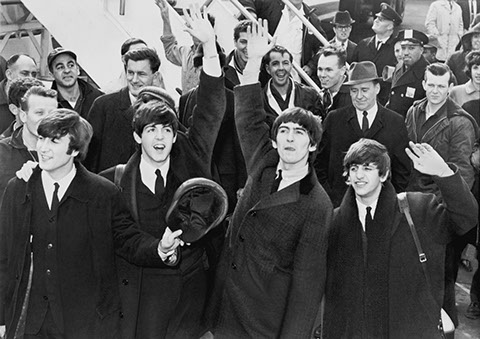
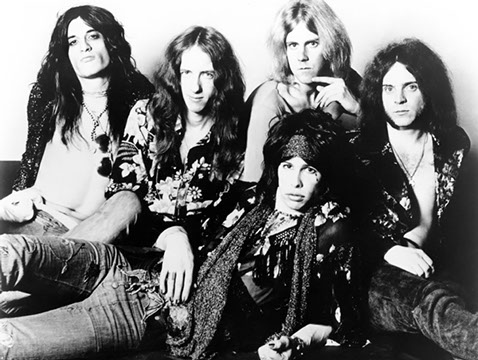
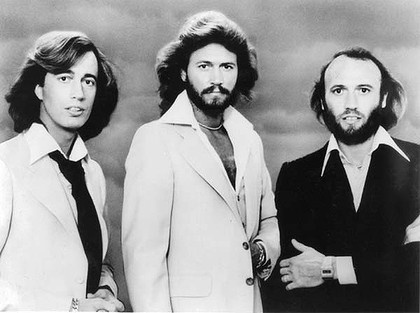

4 - 4
<
>